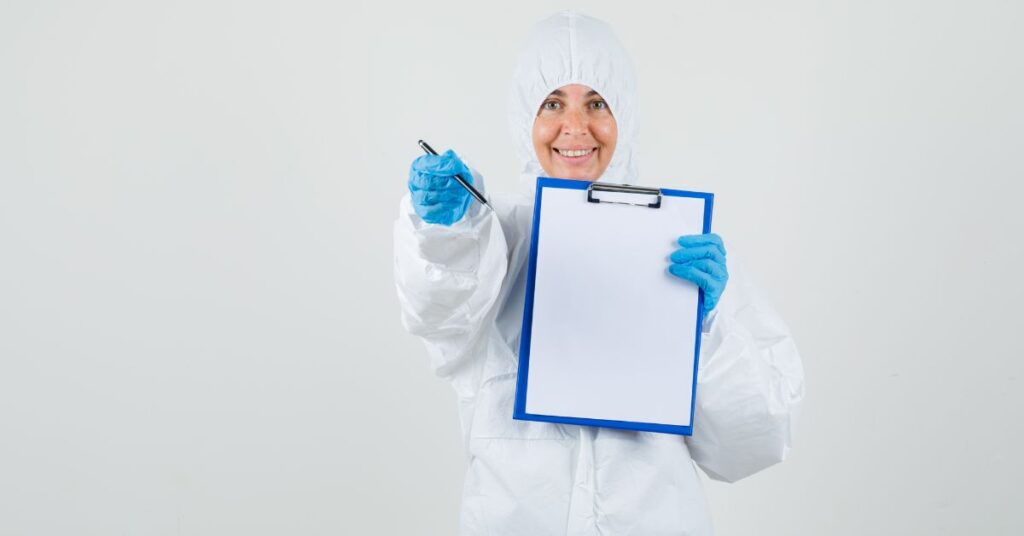We often hear about safety and health inspections, but have you ever wondered what exactly falls under the scrutiny of these watchful eyes? Whether you’re a workplace warrior, a home safety champion, or just someone curious about the nitty-gritty of well-being, join us on a journey behind the scenes. In this blog post, we’ll unravel the mystery surrounding the question: “What requires frequent safety and health inspections?” Buckle up, because it’s time to explore the places and practices that keep our world ticking safely!
The Basics of Safety and Health Inspections
In this section, we’re lifting the curtain on the silent heroes that ensure our workplaces and living spaces remain sanctuaries of well-being. From understanding the purpose behind these inspections to navigating the legal maze of workplace requirements, we’ll be your guides in unraveling the essential elements that keep us safe.
A. Definition and Purpose of Safety and Health Inspections
Let’s kick things off by demystifying the what and why behind safety and health inspections. Imagine it as a friendly checkup for your workplace or living space – these inspections are like the superheroes ensuring everything is in tip-top shape. Simply put, safety and health inspections are thorough examinations to make sure everyone is safe and sound. It’s not about catching anyone off guard, but more like a caring friend making sure everything’s running smoothly.
Must read – Spotlight On Safety: What Is A Point Of Focus During Health Inspections?
B. Legal and Regulatory Requirements for Workplace Inspections
Now, let’s get into the legal nitty-gritty. You know how there are rules for games? Well, workplaces have rules too, and they’re not just to keep things organized – they’re for keeping everyone safe. Legal and regulatory requirements are like the referee blowing the whistle to make sure everyone is playing by the safety rulebook. These rules vary depending on where you are, but the goal is the same everywhere: creating a secure environment where work can happen without risking anyone’s well-being.
C. Importance of Maintaining a Safe and Healthy Work Environment
Why bother with all these inspections and rules, you ask? Well, maintaining a safe and healthy work environment is like having a sturdy foundation for a house – it keeps everything standing tall. Think about it: when everyone feels secure, they can focus better, work better, and live better. It’s not just about avoiding accidents; it’s about creating a space where everyone can thrive. So, buckle up as we delve deeper into why a safe and healthy work environment is the secret sauce for success!
What Requires Frequent Safety and Health Inspections?
Buckle up as we venture into the diverse landscapes of safety inspections across various industries! From bustling manufacturing floors to the quiet corridors of healthcare facilities, each sector undergoes its unique safety scrutiny. Let’s break it down:
A. Manufacturing and Industrial Facilities
- Common Hazards and Safety Concerns: Picture a busy hive of activity, and you’re in a manufacturing and industrial facility. Here, we’ll uncover the common hazards that keep safety inspectors on their toes.
- Equipment and Machinery Inspections: Ever wondered how those massive machines keep humming along without a hitch? We’ll unveil the secrets of regular equipment check-ups that ensure a smooth and safe operation.
- Protocols for Chemical Handling: Safety is not just about machines but also the liquids and powders in the mix. Dive into the protocols that govern the careful handling of chemicals in these environments.
B. Construction Sites
- High-Risk Activities and Potential Dangers: Construction sites are like dynamic puzzles, but with potential risks at every turn. Explore the high-risk activities that demand vigilant safety measures.
- Scaffoldings, Fall Protection, and Equipment Checks: Ever seen a building rise from the ground up? We’ll inspect the scaffolding and fall protection systems that keep workers secure at towering heights.
- Compliance with OSHA Regulations: The rulebook for construction sites is written by OSHA, and we’ll decipher it together. Discover the regulations that ensure safety helmets are not just a fashion statement.
C. Healthcare Facilities
- Patient Safety Measures: In hospitals and clinics, the patient’s safety is top priority. Join us in uncovering the measures taken to ensure the well-being of those seeking care.
- Infection Control and Prevention: Especially crucial in recent times, we’ll explore the meticulous protocols in place to control and prevent infections within healthcare settings.
- Emergency Preparedness Evaluations: Hospitals are always ready for the unexpected. Find out how emergency preparedness evaluations play a pivotal role in ensuring quick and efficient responses.
D. Restaurants and Food Services
- Food Safety Standards and Inspections: Ever wondered why your favorite eatery always feels like a safe haven? We’ll spill the beans on the rigorous food safety standards and inspections that keep your meals deliciously safe.
- Kitchen and Cooking Equipment Inspections: Peek behind the kitchen doors as we explore how inspections ensure that chefs can whip up culinary delights without compromising safety.
- Employee Training and Hygiene Practices: The people behind the counter play a crucial role. Delve into the training programs and hygiene practices that keep restaurant staff on top of their game.
E. Office Environments
- Ergonomic Assessments: Offices are not all about paperwork; they’re about ensuring your desk and chair are your allies, not foes. Discover the world of ergonomic assessments that keep you comfortable and productive.
- Fire Safety and Emergency Exit Plans: When the unexpected happens, offices are prepared. We’ll unravel the fire safety measures and emergency exit plans that ensure a quick and safe evacuation.
- Mental Health and Well-being Initiatives: Safety isn’t just physical; it’s also about mental well-being. Journey with us as we explore the initiatives that make your office a supportive and healthy environment.
10 Steps of an Effective Safety and Health Inspections
Ensuring a safe and healthy environment doesn’t happen by chance – it’s the result of a well-executed safety and health inspection. Let’s walk through the essential steps to make this process effective:
1. Planning and Preparation: Setting the Stage for Success
Before diving into the inspection, meticulous planning is key. Identify the scope, objectives, and areas to be examined. Ensure the right team is assembled, equipped with the necessary tools and knowledge.
2. Communication and Education: Rallying the Troops
Communication is the backbone of a successful inspection. Brief the team on the goals, expectations, and safety protocols. Educate them about potential hazards and the importance of adherence to safety guidelines.
3. Preliminary Walkthrough: Eyes Wide Open
Take an initial stroll through the premises to get a feel for the environment. Identify potential risks, note any immediate concerns, and engage with personnel to gather insights. This walkthrough lays the foundation for the detailed inspection.
4. Thorough Examination: Scrutinizing Every Nook and Cranny
Now, the real work begins. Systematically inspect each area, machinery, equipment, and process. Pay attention to details, checking for compliance with safety standards, proper maintenance, and the effectiveness of safety measures in place.
5. Documentation: Putting it on Paper
Accurate documentation is crucial. Record observations, findings, and any deviations from safety protocols. Capture photographic evidence where necessary. This documentation serves as a reference point for future improvements and compliance checks.
6. Feedback and Communication: Open Dialogue for Improvement
After the inspection, share findings with relevant personnel. Provide constructive feedback on positive practices and address areas that need improvement. Encourage open communication to foster a culture of continuous improvement.
7. Corrective Actions and Follow-up: Turning Insights into Action
Identify and prioritize corrective actions based on the inspection findings. Develop a plan with clear timelines for implementation. Regularly follow up on progress to ensure that corrective measures are effectively addressing identified issues.
8. Training and Awareness: Empowering the Team
Based on the inspection findings, conduct targeted training sessions to address specific safety concerns. Ensure that all team members are aware of the importance of maintaining a safe and healthy environment and are equipped with the knowledge to do so.
9. Continuous Monitoring and Evaluation: The Safety Journey Never Ends
Safety is an ongoing commitment. Implement continuous monitoring mechanisms to track the effectiveness of corrective actions and identify new challenges. Regularly evaluate and update safety protocols to adapt to changing circumstances.
10. Reporting and Record-Keeping: Building a Safety Chronicle
Compile a comprehensive report summarizing the inspection process, findings, actions taken, and recommendations for future enhancements. Maintain thorough records for regulatory compliance and as a historical reference for future inspections.
6 Common challenges in maintaining regular inspections
Maintaining regular inspections, though crucial, comes with its fair share of hurdles. Here’s a quick rundown of common challenges:
Resource Constraints:
Limited time and personnel may compromise the thoroughness and frequency of inspections. Critical areas may be overlooked, increasing the risk of potential hazards going undetected.
Changing Regulations:
Evolving safety and health standards may require constant updates to inspection protocols. Failure to stay abreast of changing regulations can result in non-compliance and increased safety risks.
Complacency:
Routine inspections may become mundane, leading to decreased attention to detail. Over time, complacency can result in oversight, diminishing the effectiveness of the inspection process.
Inadequate Follow-up:
Identifying issues during inspections is not enough; follow-up actions are crucial. Delayed or neglected corrective actions can perpetuate safety hazards and undermine the purpose of inspections.
Technological Barriers:
Outdated technology may hinder efficient data collection and analysis during inspections. Ineffective use of technology can slow down the inspection process and compromise accuracy.
Communication Gaps:
Insufficient communication between inspection teams, management, and workers. Misunderstandings can lead to delayed or ineffective implementation of corrective measures.
Conclusion
In wrapping up our journey through the realms of safety and health inspections, it’s crystal clear that the importance of these measures cannot be overstated. From bustling industries to the quiet corners of an office, regular inspections act as guardians, ensuring our well-being is never compromised. Businesses, big or small, are urged to not just consider but prioritize and invest in these inspections. They’re not mere checkboxes but strategic investments in the longevity and vitality of any operation. So, as we conclude, let’s collectively champion the cause of safety – a cause that demands our attention, commitment, and collaboration. Share your insights, experiences, and thoughts in your view, on what requires frequent safety and health inspections? Together, let’s fortify the foundation for a safer and healthier tomorrow.
Also Read – Choose Kindness: Boost Your Health With Small Acts of Goodness


